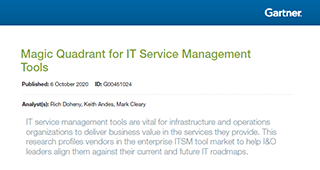How do you handle your office’s need for IT support? Do you have an internal IT team you email that rushes to your side to help? Or does your IT department answer the phone in much the same way as Roy from The I.T. Crowd, “Hello, IT. Have you tried turning it off and on again?”
Or maybe you are Roy, tired of the same questions and wishing there was a way to automate. Good news! There is. What you need is an IT ticketing system.
What is an IT ticketing system
IT ticketing software collects all incoming support requests from multiple channels. The software stores and manages all IT support, HR, legal, financial, and associated queries. It collects data for reporting and analytics while also tracking the communication between the requestor and the service provider. The IT ticketing system acts as a single point of contact between the one who issues the request and the one who provides the resolution.
Almost all IT ticketing systems have the following in common:
- A central archive that collects service requests, which can be done on-site or through cloud services
- Creation of tickets via email to a predefined alias
- Online forms for the consumer to create tickets
- Automated responses once the ticket is created
- Classifies and sorts the tickets
- Communication tracking between the requestor and the service provider
- Data collection for reporting and analytics
Why you need IT ticketing software
Automating jobs that are tedious frees up your talent to focus on what they are good at. Just ask “Jerry,” who is so busy answering the little problems day-in and day-out he misses the big one. His brain has gone into automation and he keeps hitting next, or like Roy saying, “Have you tried turning it off and on again?”
IT ticketing systems automate the easy, rote answers by directing the requestor to resolutions that are frequently asked. If the automated system cannot handle the issue, for example if it’s a complex scenario or your upset customer needs a personal touch, the IT ticketing system can escalate the problem to a human operator, like our friend Jerry. Suddenly Jerry’s mind is free to focus on the strategic activities that will benefit your customer while keeping Jerry engaged.
With automated support, the IT department can reduce costs, errors, and delays while simultaneously improving response time and reducing event volumes.
Streamline your IT support
An IT ticketing system will streamline your IT support by collecting and managing the process from end-to-end. When the individual sends in a request for service, the software sends an automated message to the requester letting them know it has been received. The ticket is created, prioritized and assigned to the individual who can resolve the issue.
Throughout the process, the software collects data that supplies the respondent with additional tools. This frees up the time needed to sort through tickets that someone else is more skilled to answer as well as providing previous solutions to the problem. The respondent can analyze the ticket, suggest appropriate fixes, and resolve the issue in a timely manner.
From beginning to end, the software documents the process and can even alert the requestor to the status of the resolution. An IT ticketing system comes as a stand-alone tool or as part of an ITSM platform.
What is an ITSM Platform
ITSM stands for IT Service Management, a collection of services that supports your IT department. ITSM is responsible for the implementation and management of IT support that improves your overall business operations and customer satisfaction. An IT ticket system is one small part of the overall ITSM platform.
ITSM helps you communicate clearly with your clients. When incidents within your organization happen, whether routine or emergency, the ITSM can keep the lines of communication open alerting your customers and stakeholders to the goings-on of the company.
Incidents happen. Whether it is an unplanned interruption to a service, a reduction in the quality of service, or an event that will influence service, the goal is to minimize the negative impact on the customer. Significant communication and collaboration are necessary for successfully handling the situation. Putting an ITSM in place long before the incident ever occurs is a smart and prudent decision.
BMC Helix ITSM
Built for the cloud, the BMC Helix is the first and only intelligent enhanced end-to-end service and operations platform. The platform is predictive, servicing the consumer before they send in the request. It provides:
- Incident and problem management
- Proactive service resolution
- Knowledge management
- Multi-cloud service management
- Smart reporting
- Change management
- Release management
- Digital workplace
- Asset management
- Configuration management
- Service request management
- Service level management
We work hard to build services and infrastructure that can be relied up by both you and your clients. IT ticketing software is one small piece of the puzzle, but it is a vital one.







